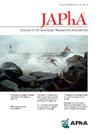农村社区药房面临的财务威胁与机遇。
IF 2.5
4区 医学
Q3 PHARMACOLOGY & PHARMACY
Journal of the American Pharmacists Association
Pub Date : 2025-05-09
DOI:10.1016/j.japh.2025.102417
引用次数: 0
摘要
背景:在美国,处方药的费用是一项重要的卫生支出。最近减少这些费用的努力可能会对农村社区的患者和为他们服务的农村社区药房产生意想不到的后果。目的:了解农村社区执业药师面临的财务威胁和机遇。方法:这是一项横断面在线调查,包括两个关键指标,财务威胁和实践机会。每一项措施都是使用定量和定性数据捕获的。抽样框架包括农村社区药房实践为基础的研究网络的现有成员。定量资料采用描述性统计进行分析。亚组分析检查了药房乡村性(高度农村和非农村)和药房类型(独立与其他)的差异。定性资料采用定性内容分析法进行分析。结果:54家农村社区药房响应。最令人担忧的财务威胁包括:掠夺性健康保险、医疗保险部分药品的销售点补偿减少、处方折扣卡、处方补足补偿不足以及直接和间接酬金(DIR)费用。更多的乡村药店也不太可能提供哮喘和心力衰竭管理、年度健康检查和旅行药物服务。与其他类型的药店相比,独立药店提供旅行医疗服务的可能性较小。扩展的最佳实践机会包括护理点测试和糖尿病自我管理教育和支持规划。定性数据分析产生了两个主题:财务威胁和努力减少对患者和患者结果的影响。结论:处方药是医疗保健的一个昂贵但必要的特征。虽然需要努力将这些成本降至最低,但重要的是,这些努力不会对患者的预后产生负面影响。农村社区药剂师确定了几个主要的财务威胁,并将这些威胁与对患者获得优质护理能力的负面影响联系起来。本文章由计算机程序翻译,如有差异,请以英文原文为准。
Financial threats and opportunities experienced by rural community pharmacies
Background
The cost of prescription medications is a significant health expenditure in the United States. Recent efforts to curtail these costs may have unintended consequences for patients in rural communities and the rural community pharmacies that serve them.
Objective
The objective of this project was to understand the financial threats and opportunities facing practicing rural community pharmacists.
Methods
This was a cross-sectional online survey comprising two key measures, financial threats and practice opportunity. Each of these measures were captured using both quantitative and qualitative data. The sampling frame included current members of a rural community pharmacy practice–based research network. Quantitative data were analyzed using descriptive statistics. Subgroup analyses examined differences by pharmacy rurality (highly rural and less rural) and pharmacy type (independent vs. other). Qualitative data were analyzed using qualitative content analysis.
Results
Fifty-four rural community pharmacies responded. The most concerning financial threats included: predatory health insurance, lower point of sale reimbursements for Medicare PartD medications, prescription discount cards, inadequate reimbursement for prescription fills, and direct and indirect remuneration fees. More highly rural pharmacies were also less likely to provide asthma and heart failure management, annual wellness visits, and travel medicine services. Independent pharmacies were less likely to provide travel medicine services than other pharmacy types. The top practice opportunities for expansion included point-of-care testing and diabetes self-management education and support programing. Qualitative data analyses yielded two themes: financial threats and the impact of efforts to reduce effects on patients and patient outcomes.
Conclusion
Prescription drugs are a costly but necessary feature of health care. While efforts to minimize these costs are needed, it is important that these efforts do not negatively impact patient outcomes. Rural community pharmacists identified several key financial threats and connected those threats to negative impacts on patients' ability to access quality care.
求助全文
通过发布文献求助,成功后即可免费获取论文全文。
去求助
来源期刊
CiteScore
3.30
自引率
14.30%
发文量
336
审稿时长
46 days
期刊介绍:
The Journal of the American Pharmacists Association is the official peer-reviewed journal of the American Pharmacists Association (APhA), providing information on pharmaceutical care, drug therapy, diseases and other health issues, trends in pharmacy practice and therapeutics, informed opinion, and original research. JAPhA publishes original research, reviews, experiences, and opinion articles that link science to contemporary pharmacy practice to improve patient care.

 求助内容:
求助内容: 应助结果提醒方式:
应助结果提醒方式:


